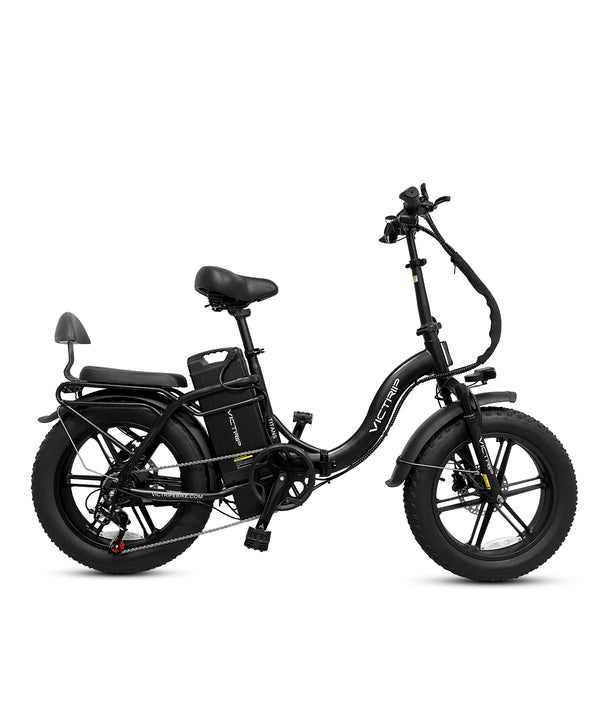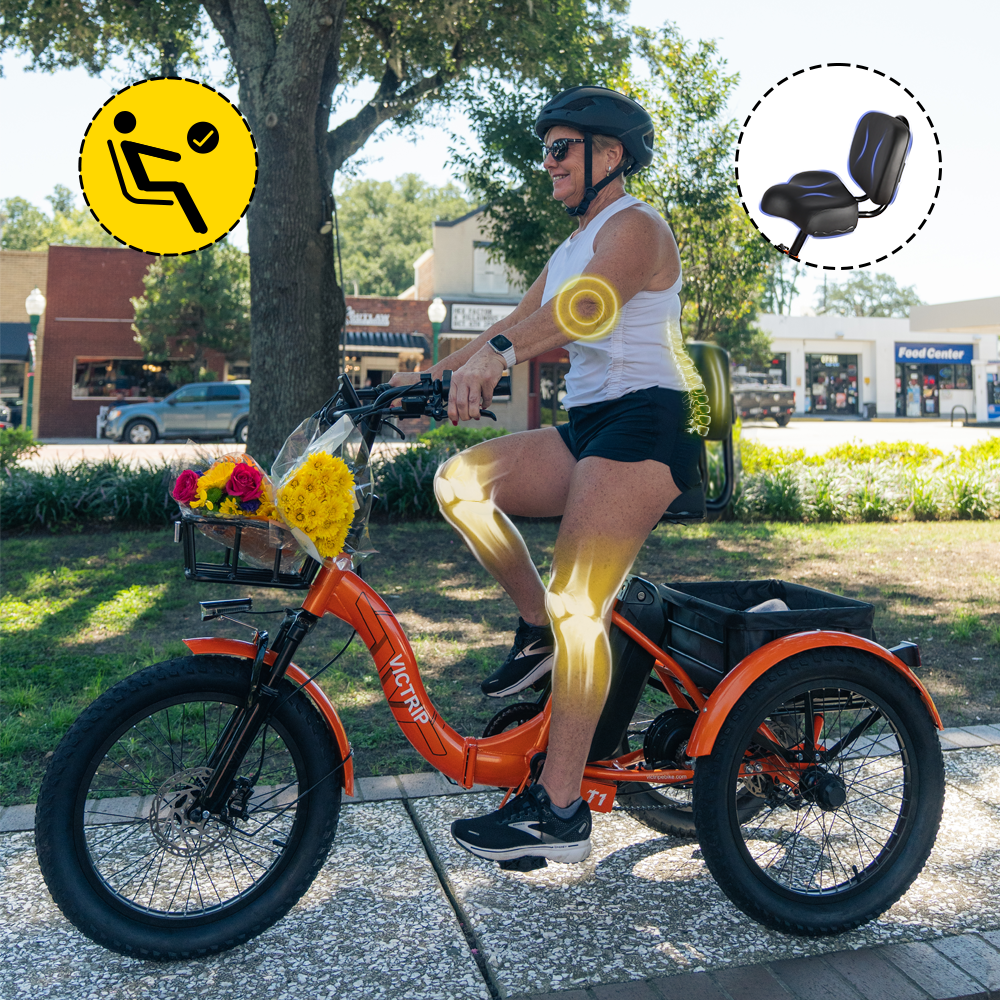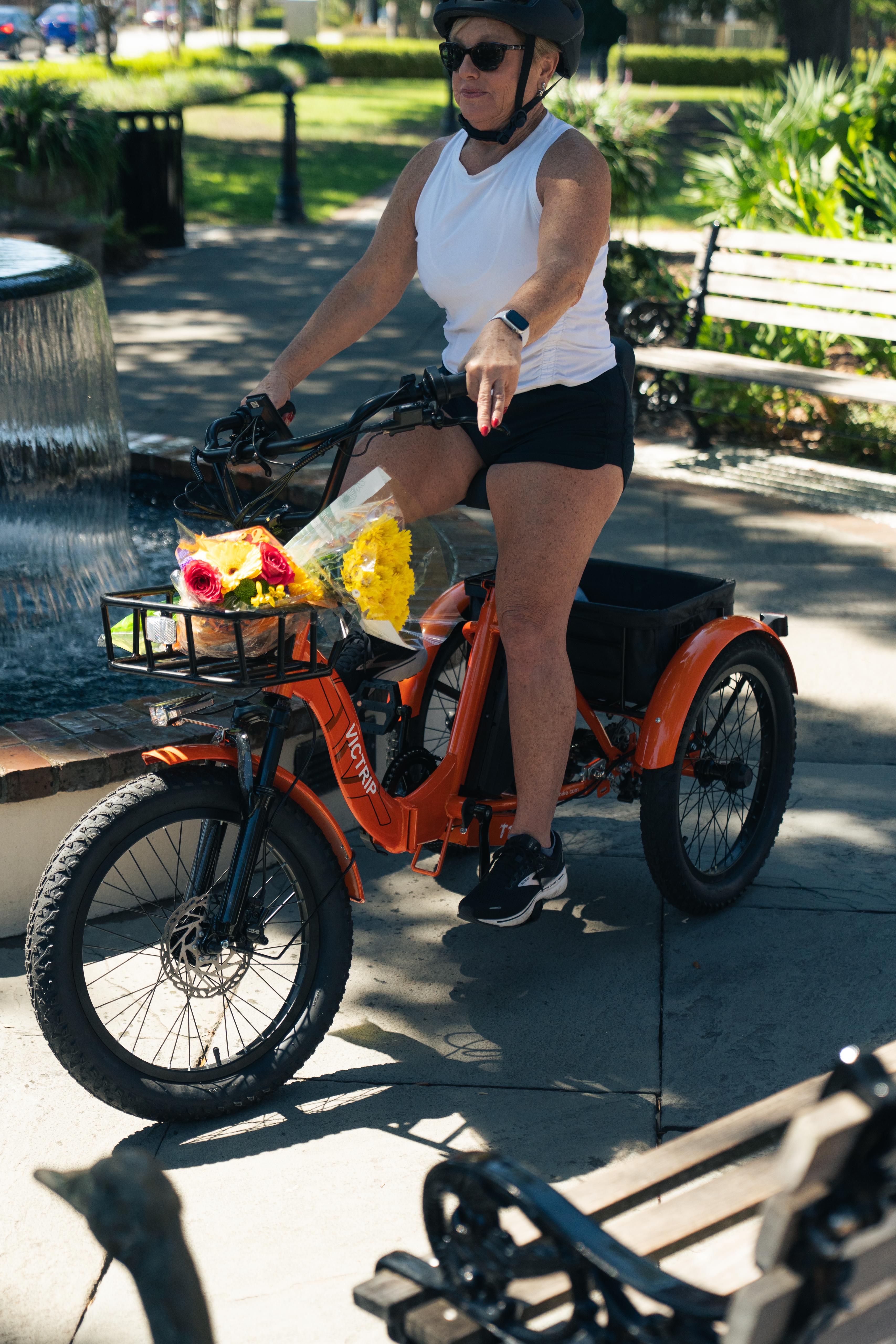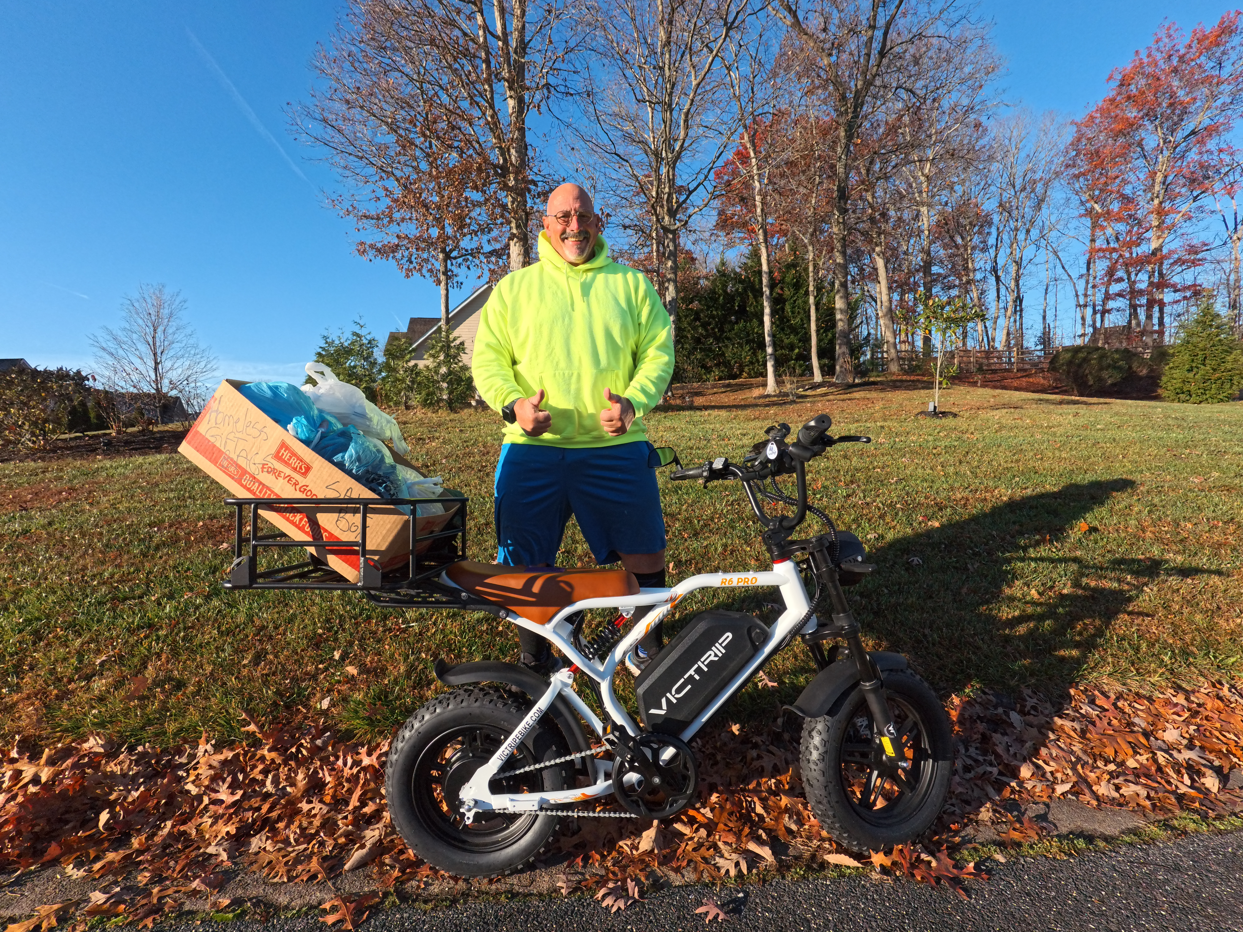Electric bicycles have moved from short urban commutes into territory that once belonged to motorcycles — many modern riders now wonder whether a single charge can carry them 180 km or more. When we talk about 180km+ Long Range eBikes, we’re not just repeating a marketing claim; we’re asking practical questions about battery energy, rider technique, terrain, and whether the sum of those parts will get you where you want to go. This article breaks that down clearly and optimistically — you’ll learn what’s realistic, what’s hype, and what you can do to push your eBike’s real-world range toward (or past) the 180 km mark.
What "180km+ Long Range eBikes" actually means
When a manufacturer says “180 km+,” that often refers to an optimistic laboratory or ideal-condition test: flat road, steady low-assist levels, a light rider, and no headwind. Real-world riding is messier. To interpret the claim:
-
Marketing range = theoretical number derived from idealized tests (light rider, ECO mode, constant low speed).
-
Realistic range = what most riders will see on mixed terrain with moderate assist and normal loads.
-
Ultra-range rides = rides where the rider, bike setup, and route are specifically optimized to squeeze every Wh from the battery.
So yes — 180km+ Long Range eBikes are possible in practice, but only under a set of favorable conditions and deliberate choices. Real-world results vary, but high-capacity models such as the VICTRIP TITAN S long range Ebike make these figures realistic for touring riders. If you want consistency at that distance, you’ll have to pay attention to the variables below.

Key factors that determine eBike range
Several variables combine to determine how far you’ll travel on a single charge. Think of range as the output of an equation whose inputs you can influence to varying degrees.
Battery capacity vs usable capacity
Battery capacity is usually given in watt-hours (Wh). But manufacturers sometimes quote nominal capacity — the theoretical maximum — rather than the usable capacity a battery management system (BMS) allows to protect cell life. For example, a 900 Wh battery might only allow 850 Wh usable; thermal margins or conservative BMS settings can reduce usable capacity further.
Practical takeaway: Check usable Wh, not just headline Wh. Bigger Wh gives more range, but diminishing returns kick in because more weight also increases energy consumption.
Motor efficiency and drivetrain losses
Different motors (hub vs mid-drive) and drivetrains impact how efficiently stored energy converts to forward motion. Mid-drive systems leverage gearing to keep the motor in efficient ranges, often producing better real-world efficiency for long rides. However, losses in the drivetrain, controller efficiency, and heat management matter during long, high-power runs.
Read More: Hub Drive vs Mid Drive: Which eBike Motor Is Better?
Rider behavior and speed
Speed is a killer of range because air resistance grows roughly with the square of speed. Maintaining a steady, moderate speed (often 20–25 km/h) uses far less energy per km than aggressive 30+ km/h riding. Throttle-only riding burns more energy than pedal-assist modes that allow your legs to contribute.
Terrain, weather, and aerodynamics
Hills multiply consumption because climbing requires sustained high power. Headwinds and low temperatures reduce battery efficiency, too. Aerodynamics — both rider position and accessories like panniers — make a surprising difference on long rides.
Real-world case studies: how riders get 180km+
Riders who reach 180 km+ usually combine a high-capacity pack (900–1400 Wh), riding strategy, and a light payload.
-
Commuter-to-tourer: 38-year-old rider, 70 kg, mid-drive eBike with 1000 Wh usable. Rider used low assist on flats, medium on climbs, averaged 23 km/h, and added two short 10–15 minute regen segments while descending. Final range: ~185 km on mixed terrain.
-
Endurance biker: 80-kg rider, aerodynamic setup, 1200 Wh battery, used cadence-optimized pedaling and swapped to an aero tuck at 35–40 km/h where safe; final range exceeded 200 km but required careful pacing.
Common themes: large usable Wh, conservative average speed, low rolling resistance tires, and not carrying excessive weight.
Battery management and charging strategies
If you’re planning a 180 km+ ride, battery care matters before, during, and after the trip.
-
Pre-ride: Charge to ~95% for immediate range, avoid repeated full-100% cycles unless needed for the trip. Check cell temps and BMS health.
-
On-ride: If you can, perform opportunistic charging — café stops or public outlets can give a quick top-up. Some touring setups include a small range-extender battery pack or a second removable battery.
-
Storage and post-ride: Store at ~40–60% for long-term; avoid extreme heat.
Practical option: carrying a spare removable battery can be the simplest route to reliably surpass 180 km without complex energy-savings gymnastics.
Tech advances pushing the range envelope
Battery tech keeps evolving: higher energy-density cells, smarter BMS, and incremental improvements in motor efficiency all contribute. The VICTRIP TITAN S 1000W Ebike embodies these advances — pairing a robust motor with intelligent power delivery that conserves battery life during extended trips.
-
Energy density: newer chemistries and cell formats gradually increase Wh/kg, letting manufacturers offer bigger packs without impossibly heavy frames.
-
BMS and cell balancing: smarter electronics reduce usable capacity loss over time and allow safe higher discharge rates.
-
Regenerative tech: still marginal on bikes (limited recovery during descents) but useful in hilly environments.
Keep an eye on firmware updates — manufacturers may improve range via improved motor-controller algorithms.
TOP PICK

VICTRIP®TITAN S 1000W Ebike
$1,499.00
Accessories and setup for ultra-range rides
The following items can materially improve range when used together:
-
Low rolling resistance tires (with puncture protection) to cut energy lost to friction.
-
Efficient gearing for mid-drive systems — keep the motor in an optimal RPM/braking range.
-
Aerodynamic helmet and riding position — even small reductions in drag save watt-hours over long distances.
-
Panniers instead of backpacks to centralize mass and reduce rider fatigue.
-
Removable second battery or external range extender for guaranteed long-range capability.
Each accessory adds cost and sometimes weight — balance is key.
Safety and legal considerations
Long-range eBike setups often increase weight and potentially speed. Consider local laws: many regions limit eBike power and top speed for classification. Safety-wise, heavier bikes require better brakes and robust wheels; long rides demand good lighting, reflective gear, and a plan for mechanical issues.
Cost-benefit: is chasing 180km+ worth it?
There’s a trade-off: bigger batteries cost more and add weight. Adding a second battery adds cost but reduces range anxiety. Compare the expense and complexity of outfitting an eBike for 180 km vs. alternatives like a small ICE vehicle, train, or combining a short public-transport hop with a shorter ride.
Often the best practical solution is modular: use a high-capacity primary battery for daily riding and add a second battery only when you need ultra-range.
How to plan a 180km+ trip
Route planning is practical and often fun:
-
Map elevation and choose routes with fewer steep climbs if possible.
-
Identify charging options — cafés, visitor centers, or friend’s houses.
-
Plan assist strategy — use ECO on flats, save TURBO for necessary climbs or headwinds.
-
Prepare tools and spares — tube repair, multi-tool, and a compact pump.
-
Stagger effort — eat, hydrate, and keep cadence steady.
Good planning often turns a theoretical 180 km ride into a comfortable day of travel.
Top 5 riding strategies to maximize distance
-
Pace for efficiency — slower steady speeds beat high-power bursts.
-
Use cadence-assisted pedaling — your legs are free energy; use them.
-
Lean on regenerative braking where practical — small gains add up.
-
Lighten the load — every kilogram saved reduces energy consumption.
-
Optimize tires and pressure — correct pressure for your load and road cuts rolling resistance.
Conclusion
Is 180 km on a single charge an achievable, repeatable reality for eBike riders? Yes — but not by accident. 180km+ Long Range eBikes exist in the intersection of high usable battery capacity, efficient motor systems, rider technique, careful packing, and route planning. For many riders, the practical solution is modular: invest in a larger primary battery (or two removable batteries), optimize riding style and setup, and plan routes to avoid energy-sapping terrain and weather. If you’re willing to accept the weight, cost, and planning overhead, those long single-charge rides become not only possible but enjoyable.
For deeper, model-specific comparisons and tested range numbers, consult reliable review sites and manufacturer specs. A good starting place for community-tested long-range reports is BikeRadar or dedicated eBike touring forums.
FAQs
Can any eBike be modified to reach 180 km on a single charge?
Not practically. Most stock commuter eBikes with small batteries (300–500 Wh) can't reach 180 km without a second battery or radical changes. For reliable 180 km+ range, plan for 900 Wh+ usable capacity or a removable second battery.
Does regenerative braking make up for long climbs?
Regeneration helps on long descents, but recovered energy is small compared to what’s consumed on climbs. It’s a helpful incremental gain, not a primary tactic to reach 180 km.
Is a mid-drive better than a hub motor for range?
Often yes — mid-drives use gears to keep the motor in an efficient range, especially on varied terrain, so they can be more efficient for long rides.
How much slower should I ride to increase range?
Small reductions in average speed can significantly increase range because aerodynamic drag scales non-linearly. Dropping average speed from 30 km/h to 24 km/h often yields large energy savings.




Share:
Top Birthday Gift Idea: Moped Style Ebikes for Fashionable Girls
Are Step Through EBike Better for Seniors?